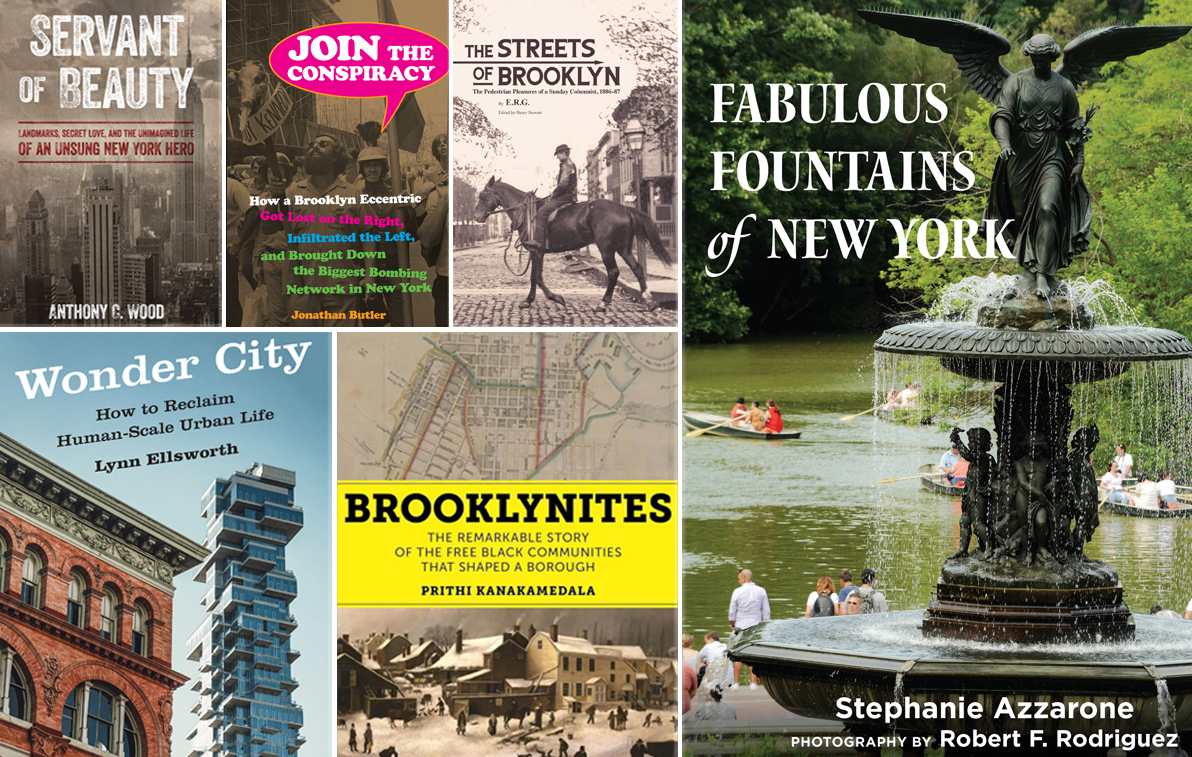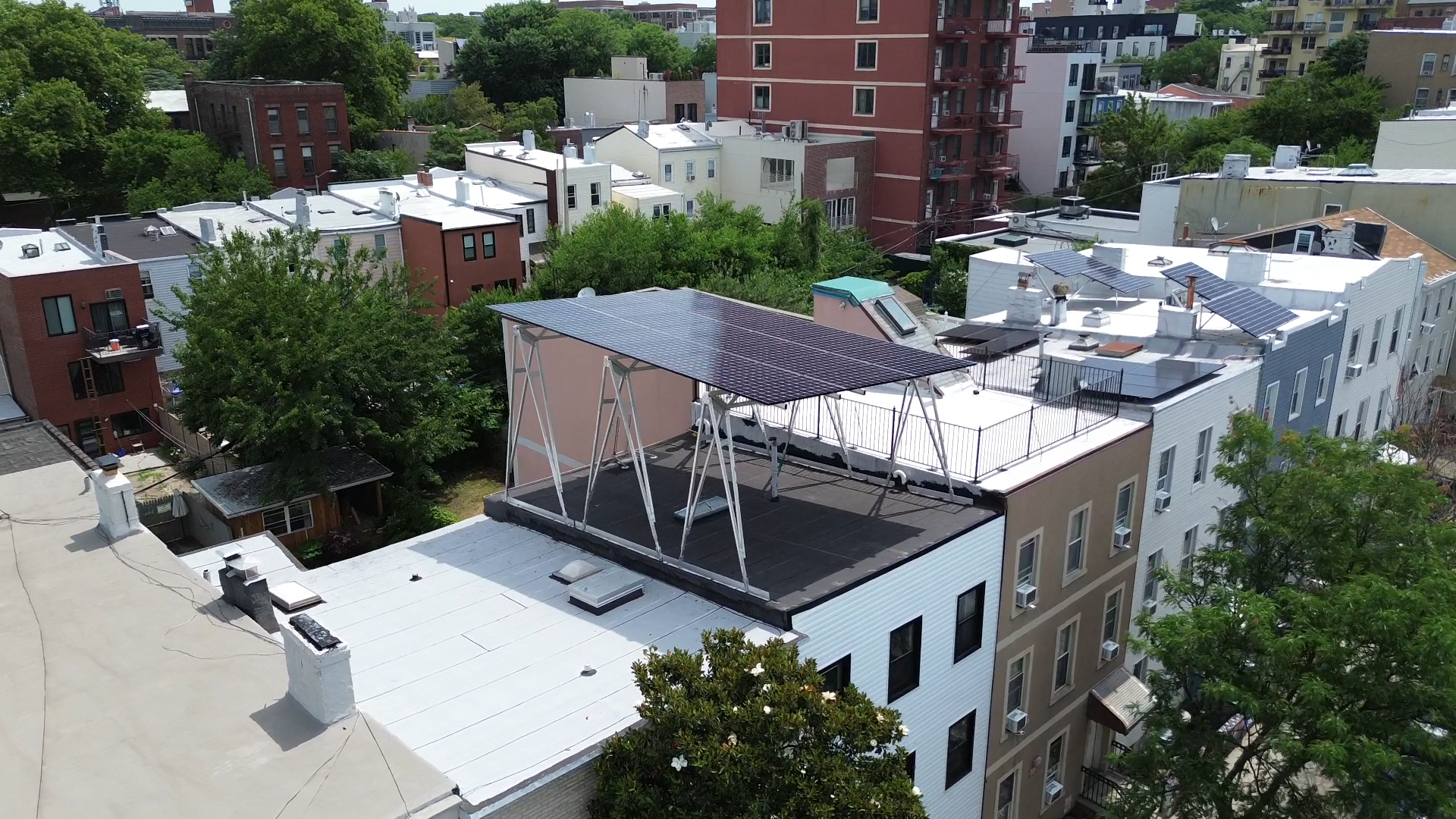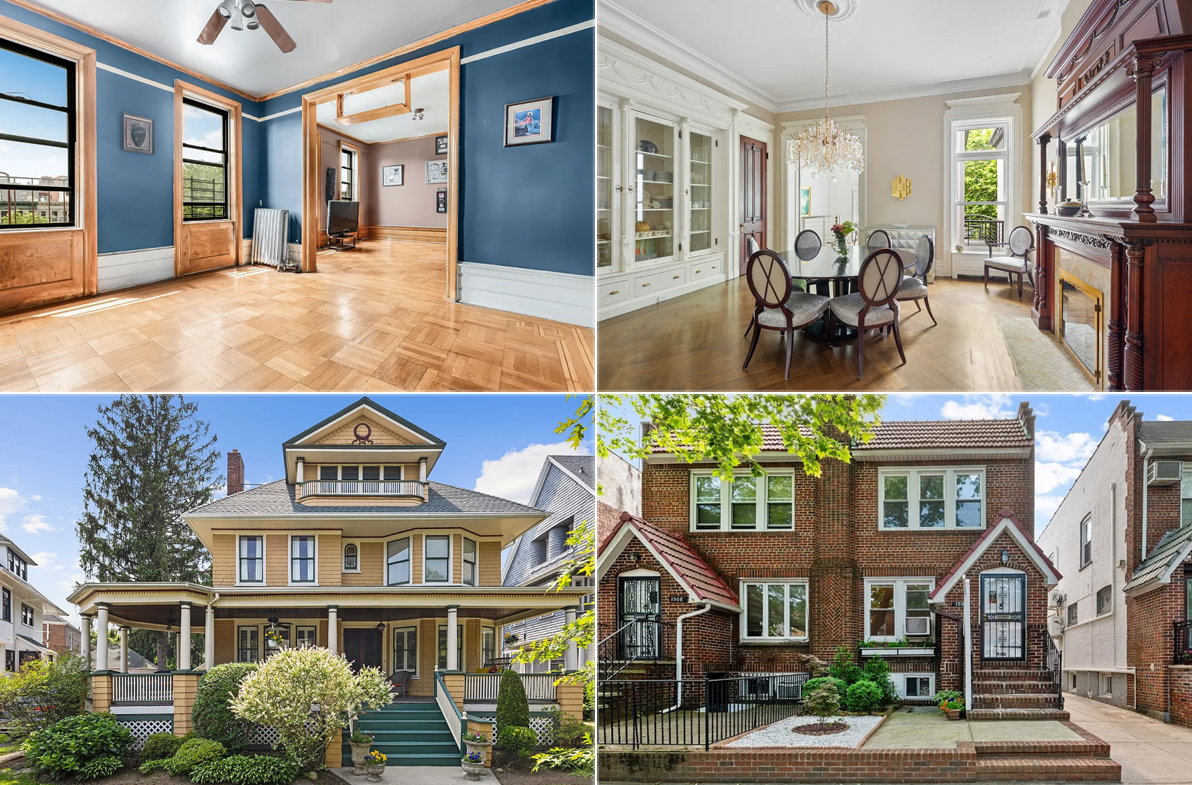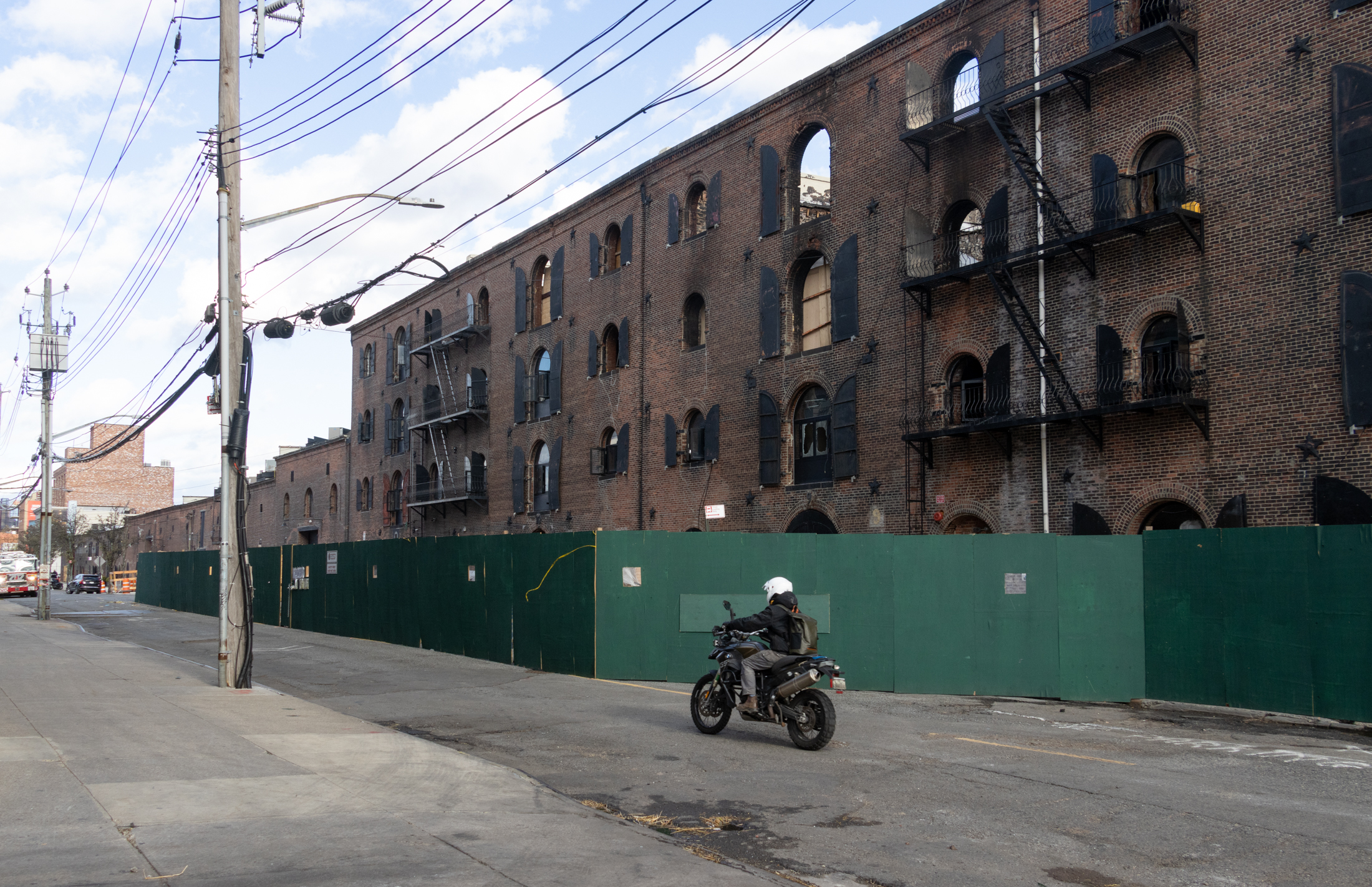Brooklyn's Waterfront Gets Boost from Nat'l Trust
In the wake of the destruction of some the Brooklyn waterfront’s most historic structures, including the Revere Sugar factory, the Dutch Mustard building and the Greenpoint Terminal Market, the National Trust for Historic Preservation will today announce that it is adding the entire area from the Sunset Park through Greenpoint to its list of America’s…


In the wake of the destruction of some the Brooklyn waterfront’s most historic structures, including the Revere Sugar factory, the Dutch Mustard building and the Greenpoint Terminal Market, the National Trust for Historic Preservation will today announce that it is adding the entire area from the Sunset Park through Greenpoint to its list of America’s 11 most endangered historic places. The buildings really represent an important part of Brooklyn’s heritage, and it would be a tragedy to lose it, Richard Moe, president of the trust, said in an interview. We’re very concerned that there’s such a rush on to demolish everything. While presence on the list does not stop any of the buildings from death or disfigurement, it does give the issue a national profile and, hopefully, adds to political pressure for government to act on a local level to save an important part of the city’s heritage. Timed with the release of this news, the Municipal Art Society launched a new website this morning called SaveIndustrialBrooklyn.org that details the architectural and historic context for many of the waterfront structures. It also has a very cool interactive map (shown above) with the 411 on over 50 buildings in the footprint of the National Trust’s designation. As Mr. Moe puts it, This is a problem that can be fixed — it’s not too late. As we’ve said before, tearing down these buildings is not only short-sighted but potentially bad business. Their continued presence, whether converted in condominiums or turned into homes for arts institutions and other public uses, will only enhance the texture, and ultimately the dollar value, of the waterfront as a whole. Update: We’ve posted a few photos from this morning’s press conference on the jump.
Brooklyn Waterfront Called Endangered Site [NY Times]

National Trust regional director Wendy Nicholas

MAS head Kent Barwick

Pratt Urban Planning Guru Ron Schiffman





I’m all for making Brooklyn’s waterfront a major destination point in the city. How about making part of it into something like Chicago’s Navy Pier? We should definitely include an outdoor amphitheater and enclosed concert hall. Perhaps even an all glass Brooklyn museum of modern art. That would be hot!
I’m all for making Brooklyn’s waterfront a major destination point in the city. How about making part of it into something like Chicago’s Navy Pier? We should definitely include an outdoor amphiteather and enclosed concert hall. Perhaps even an all glass Brooklyn musuem of modern art. That would be hot!
Preserving the Brooklyn waterfront is such a joke! There’s nothing there! Ha! LOL!
“Brand new stinking newbies” are the people who made brooklyn what it is now, and CONTINUE to make brooklyn vital”
I’m sorry but Brooklyn was already VITAL before you got here and will remain so long after you leave.
I hope you “newbies” stay the heck out of Bay Ridge and Bensonhurst. We don’t take kindly to foreigners telling us how to lead and run our lives. Please stay downtown by the projects where you can assert your will with impunity.
The trouble with the views of people who think with the pumped up hysteria of 10:26, if that in throwing out the baby with the bathwater, you lose much of what makes a successful waterfront work in the first place.
When we look over to Manhattan from Bklyn, what is attractive about the skyline is the almost organic mixture of old and new buildings, architectural styles, and functions of those buildings. The beauty of a Woolworth Building, the Met Life Building, Empire State Building and Chrysler Building, are highlighted by some of the shinier, newer glass and steel tower buildings, which reflect the sunlight as well as the lines of their neighboring buildings. All of these are nestled in the lower level buildings like the Piers in the South Street Seaport, the ferry terminals, and the other warehouse buildings on the waterfront. Anchoring them all together are the roadways and highways, especially on the FDR Drive. This was not planned, for the most part, it evolved, and the sight of it draws the eyes of the world, because you can see the history of the city in the silhouette.
How many people come to downtown Detroit to marvel in the new central city, which looks like a science fiction set of glass and steel towers? Robocop, the movie about technology gone mad, worked there for a reason.
The Brooklyn waterfront can offer an opportunity to be just as diverse in style, form and function, but only if the old and new are allowed to co-exist. While people like 10:26 would love to ring the waterfron with shiny new towers, I hope that that is never allowed to happen. It is possible to adapt factory and industrial buildings to new use – the Tate Modern example can work here, especially in buildings like the Domino Factory, it could have worked in the now burnt Greenpoint complex. Of course not every old pile of bricks should be, or needs to be saved. But to simply let developers, who have shown to be a group mostly devoid of imagination, have at it, would be to see the entire waterfront looking like the Wmsburg waterfront does now – a sun blocking hodgepodge of overly large, architecturally unimaginative piles of overpriced real estate.
That is not the waterfront that will draw the attention of the world, it will only show that NYC is only a city of commerce, not innovative 21st century city planning. I find it interesting that many European cities, who have waayyy more architectural treasures to work around, have come up with the most interesting new buildings, and the most innovative ways of integrating old and new. They should be coming to us, here in NY, to get ideas. That will not be happening anytime soon, unless we stop putting profit before planning.
I hate people telling me what “true Brooklynites” want. I am very proud of the borough I have lived in for over a quarter century. It’s greatness does not depend on a shiny new waterfront, a Bizarro World stadium/arena, or tall towers.
Would be cool to reclaim some of these buildings as cultural institutions in the same vein as the Tate Modern in London. I think there could be a very thoughtful way to both preserve a bit of the history and attract new resources to the area. It’s not a zero sum game!
true, many of the old industrial waterfront structures aren’t architectural gems and don’t deserve to be saved on the basis of their design merit. however, another 3 (or 30) glass towers w/expensive condos for millionaires aren’t to great, either, even if they build in “publically accessible open space,” which aren’t really parks, and aren’t really open.
loss of the graving dock in red hook was historically significant. loss of the revere sugar not so. distinctions need to be made.
i think much of the impulse toward preservation these days actually comes from folks who care less about stopping time and keeping everything as is, and more about stopping the heinous march of concrete and glass and seems to be the dominant characteristic of the current (historic) building boom.
the feeling of place and neighborhood is one of bklyn’s most appealing qualities, one that will wane in inverse proporation to the number of lux towers erected.
I agree with 10:26. How about signature buildings and structures worthy of future historical merit and landmarking being built on the Brooklyn waterfront, e.g., the Sidney Concert Hall. The poster is advocating making Brooklyn’s waterfront a major international destination. I don’t get why people are having a problem with this. Can someone please explain why?
Wow, this thread really makes me love Walentas. If he hadn’t practically bought up all of dumbo, it would’ve been leveled by now, to make way for whatever you people think of as high end architecture (you want to throw some names out? I’m just curious if you have any idea what high end architecture actually looks like).